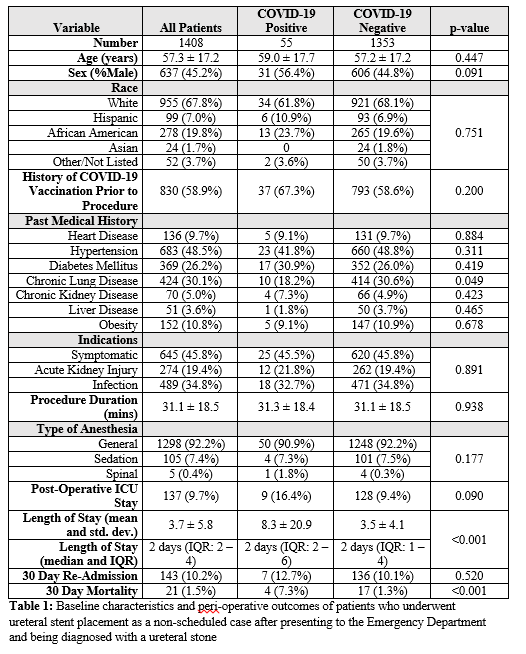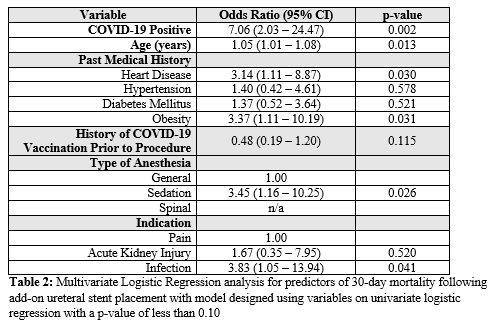BACKGROUND: Patients with an active SARS-CoV-2 infection are at a higher risk of post-operative mortality as well as pulmonary and cardiovascular complications. In this study, we analyze the post-operative safety of patients undergoing cystoscopy with ureteral stent placement for an obstructing ureteral calculi that tested positive for COVID-19.
METHODS: We retrospectively identified patients who underwent cystoscopy and ureteral stent placement between June 5, 2020 and December 31, 2022 as an add-on case after presenting to the Emergency Department. Patients were stratified by whether they had a positive COVID-19 test on admission. Baseline characteristics were compared using Students t-test for continuous variables and Pearson chi-square test for categorical variables. Univariate and multivariate logistic regression analysis was performed to identify predictors of postoperative 30-day mortality.
RESULTS: A total of 1,408 patients underwent add-on cystoscopy with ureteral stent placement for an obstructing calculus, of which 55 (3.9%) patients had a positive COVID-19 test. When stratified by COVID-19 status, both groups were similar with regards to age, sex, race, co-morbidities, indications, procedure duration, and type of anesthesia administered (Table 1). Patients without COVID-19 had a higher prevalence of chronic lung disease. Of the 137 patients that were admitted to the ICU, 9 patients were COVID-19 positive (16.4% vs. 9.4%, p = 0.09). On multivariate logistic regression, patients with COVID-19 had a higher odds of 30-day mortality (OR 7.06, 95% CI: 2.03 - 24.47, p = 0.002) when controlling for age, co-morbidities, vaccination status, anesthesia type, and indication for the stent (Table 2).
CONCLUSIONS: Patients that underwent cystoscopy and ureteral stent placement for an obstructing ureteral stone with a concurrent COVID-19 diagnosis had an increased risk of perioperative 30-day mortality. It is unclear how this fares to patients with COVID-19 who were diagnosed with a ureteral stone and did not undergo ureteral stent placement.

